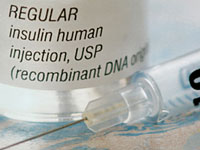TYPES OF DIABETES
There are three main types of diabetes:
Type 1 diabetes is sometimes called insulin-dependent, immune-mediated or juvenile-onset diabetes. It is caused by an auto-immune reaction where the body’s defence system attacks the insulin-producing cells. The reason why this occurs is not fully understood. People with type 1 diabetes produce very little or no insulin. The disease can affect people of any age, but usually occurs in children or young adults. People with this form of diabetes need injections of insulin every day in order to control the levels of glucose in their blood. If people with type 1 diabetes do not have access to insulin, they will die.



